Spring is in full bloom and what better way to begin than with a photo a photo of a bird with a flower for a face.
I’ve been told by several people that this photo reminded them of the demogorgon from Stranger Things and I actually love that comparison. The actual story behind that photo is this: Several Purple finches were plucking the flowers from a volunteer cherry tree and feasting on the nectar. They would then drop the blossoms and quickly move on to the next flower. I got out my camera, because that’s just what I do, and starting taking photographs. Below is another view of a finch with a flower.
Springtime is synonymous with migration. Over three billion birds will migrate to and through the country from their southern wintering grounds. They migrate for food and they migrate to mate. Recently, I witnessed two different pairs of bird species involved in different sorts of mating activities — first Rufous hummingbirds and then Red-breasted sapsuckers. The sapsuckers were engaging in some questionable hijinks in the branches of a willow tree, while the hummingbirds seemed to be doing a mid-air fancy tango. And, it being a particularly booming year for hummingbirds around my house, I also spotted two male Rufous hummingbirds in a possible territorial dispute, likely over food or a lady Rufous. Said lady Rufous got caught in the kerfuffle but she quickly flew beneath a deck chair and planted her tiny behind on the porch planks while the two males zipped off to duke it out elsewhere.
It can be incredibly difficult to spot birds actively nesting but I have stumbled upon a few over the last three years. One was a robin’s nest just a step off the trail that I walk nearly every day. I froze when when I saw it, as did the robin tending the nest.
Every day I would see a robin dutifully sitting on that nest and incubating the eggs. And then one day, no more robin. No eggs or hatchlings either. They were just gone and I will never know what happened, though it’s likely not a heartwarming outcome. That’s nature and the difficult life of a bird. There are so many predators out to get them, even other birds…
On a warm day in the spring of 2024, I was sprawled on a lounge chair in my yard. I had noticed a pair of California scrub-jays continuously going back to a certain branch on a nearby oak tree. This was not abnormal. Many birds have their favorite perches. Just then, a Common raven flew in and landed in the same tree. The scrub-jays went absolutely berserk. I think this behavior clued in the raven to the scrub-jay’s nest, which I didn’t know existed until the raven hopped behind some foliage and then launched itself out of the oak — with a stolen scrub-jay chick dangling helplessly in its grasp. Both scrub-jays parents made a noisy pursuit but their chase was fruitless. The raven could not be caught and they wouldn’t be getting their nestling back. The jays soon returned to the nest, still agitated.
To say that was the end of the story would be a lie. The raven returned a few minutes later and swiped another nestling. Again, the scrub-jays gave chase, and again, it was a hopeless pursuit. The raven came back a third time and took chick number three to the same result. Three nestlings taken in a span of twenty minutes. Too enthralled with the backyard happenings to get up and grab my camera, I had merely watched the scene as it progressed, my mouth agape every time I watched the raven fly back to snake another meal from the jay’s nest.
Another nest that I came across was that of a Bullock’s oriole in a Cottonwood tree. Orioles construct hanging, pouch-like nest, woven from material like grass, vines, bark, even string or hair and feathers may be used. This one was about twenty feet from the ground, dangling from one of the lowest branches of the tree.
Again, this was directly below a trail on the property that I walk nearly every day. As I stared up at the nest, the male oriole returned with a collection of insects in his beak, inspecting me from above.
Not wanting to disrupt them and keep the chicks from getting fed, I resumed my walk.
At one of my favorite spots to go birding, there was a chatty Red-breasted nuthatch busy doing bird things on the trunk of a maple. It soon disappeared into a small hole in the tree, where it proceeded to clear a cavity, presumably for nesting. It would collect the tree innards in its beak and shake its head to be free of the debris. Then would eye me for a few seconds before returning to its task.
Great horned owls can be cavity nesters as well but more often than not they will have a large cup nest. They typically don’t make their own nests, and instead will take over an old nest made by a similarly-sized bird of prey, like a Red-tailed hawk. The owls wear and tear incidentally ruins the nest in just one season, meaning they likely don’t use the nest again — unless its repaired by another raptor.
The first Great horned owl nest that I found, the one that turned me into a rabid, bird-obsessed nerd, was in the crotch of a tree, not twenty feet above a trail I walk near my house. The next year, the Great horned owl mates nested elsewhere in their territory, though there was still frequent signs of their lingering presence. And then last year, in the spring of 2024, the Great horned owls returned to nest not fifty feet from the original nest that I’d found. I was much more prepared by that point. I had a great camera with a telephoto lens, I’d acquired a ghillie suit, and I had learned the importance of a bird blind to disturb their life in the smallest amount possible. The photographs that occurred because of my desire to be unseen would not have happened if I’d made my presence known to the owls.
So much happening outside during this season, I’d better head out and observe.
Until next time.





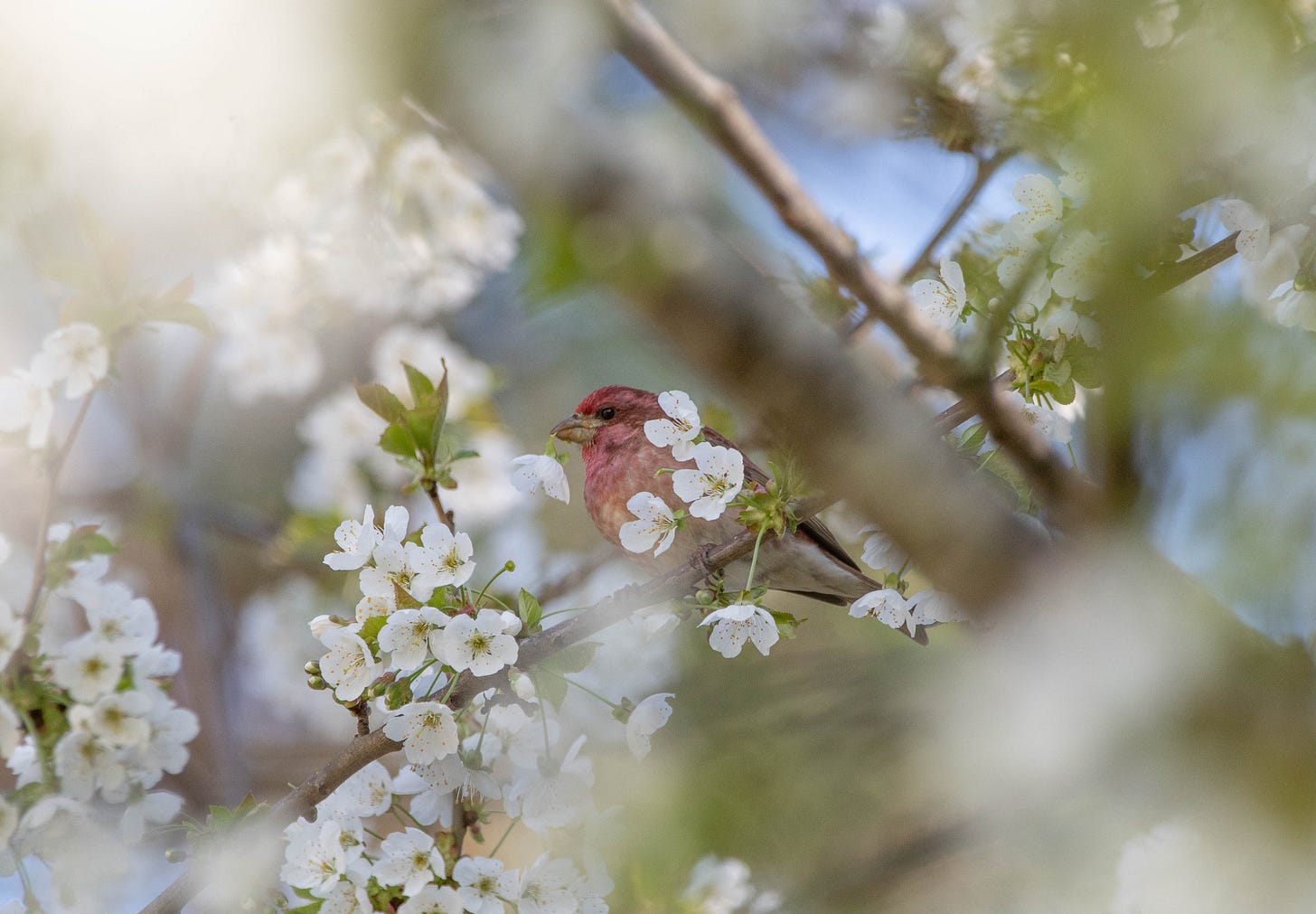

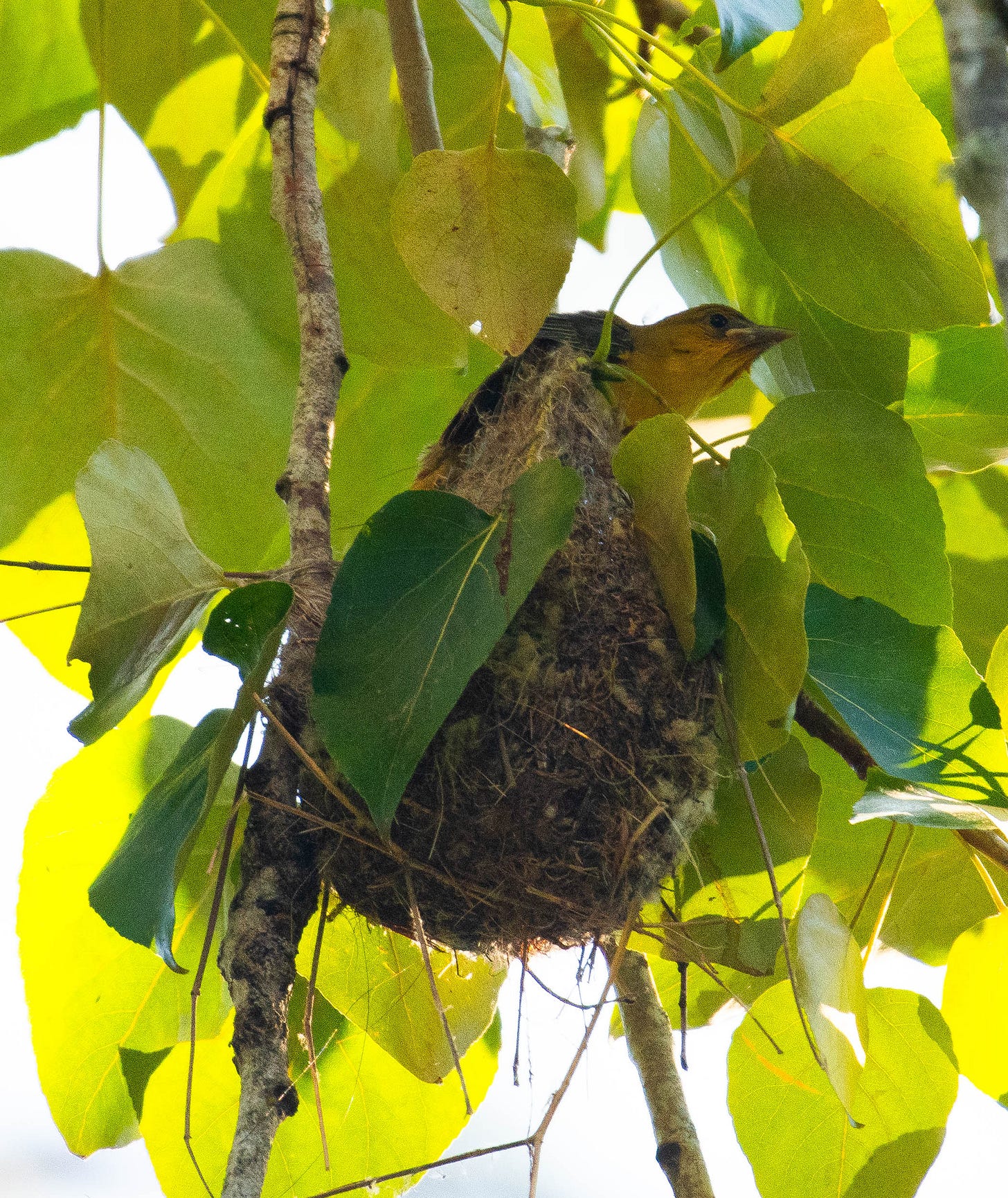
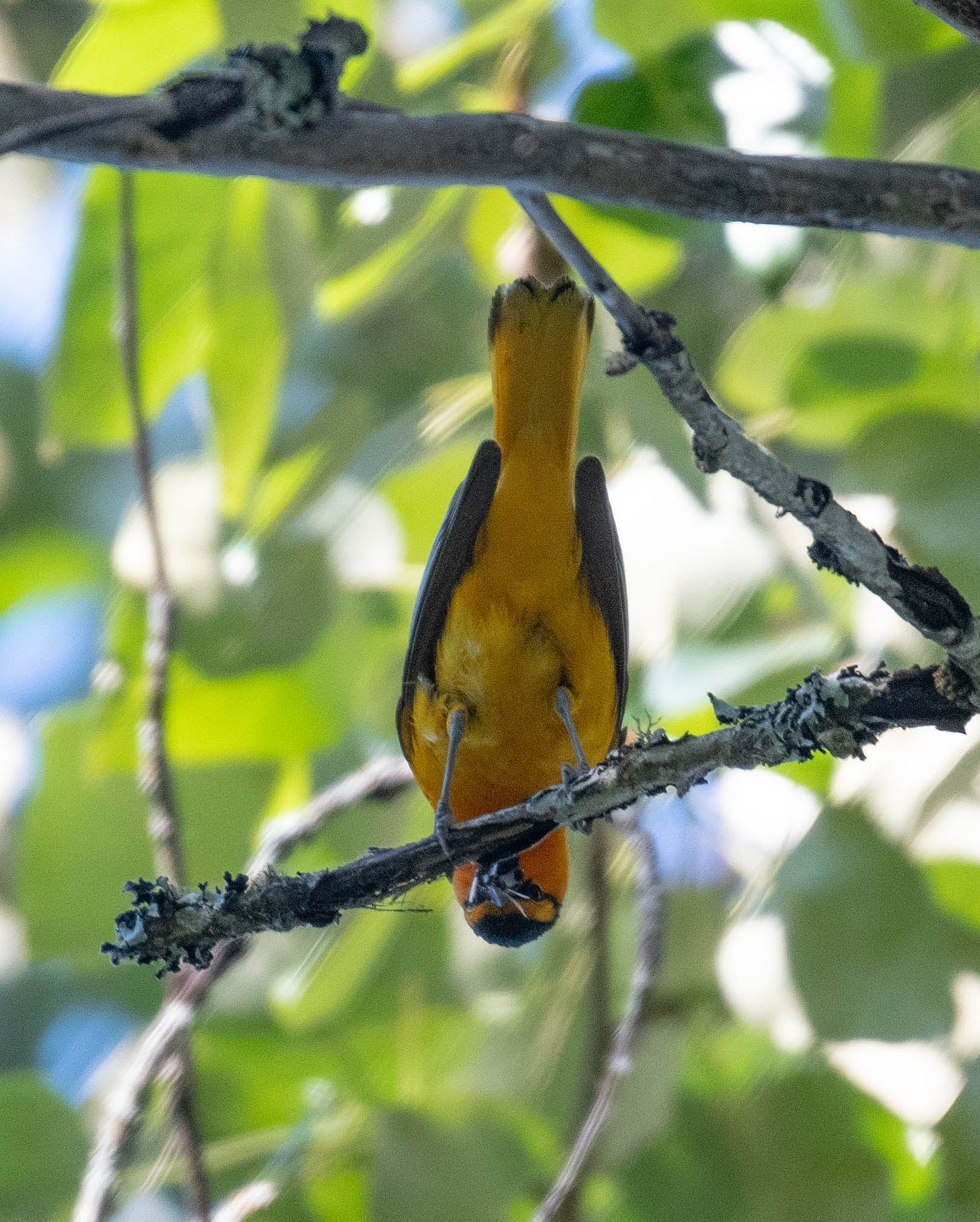

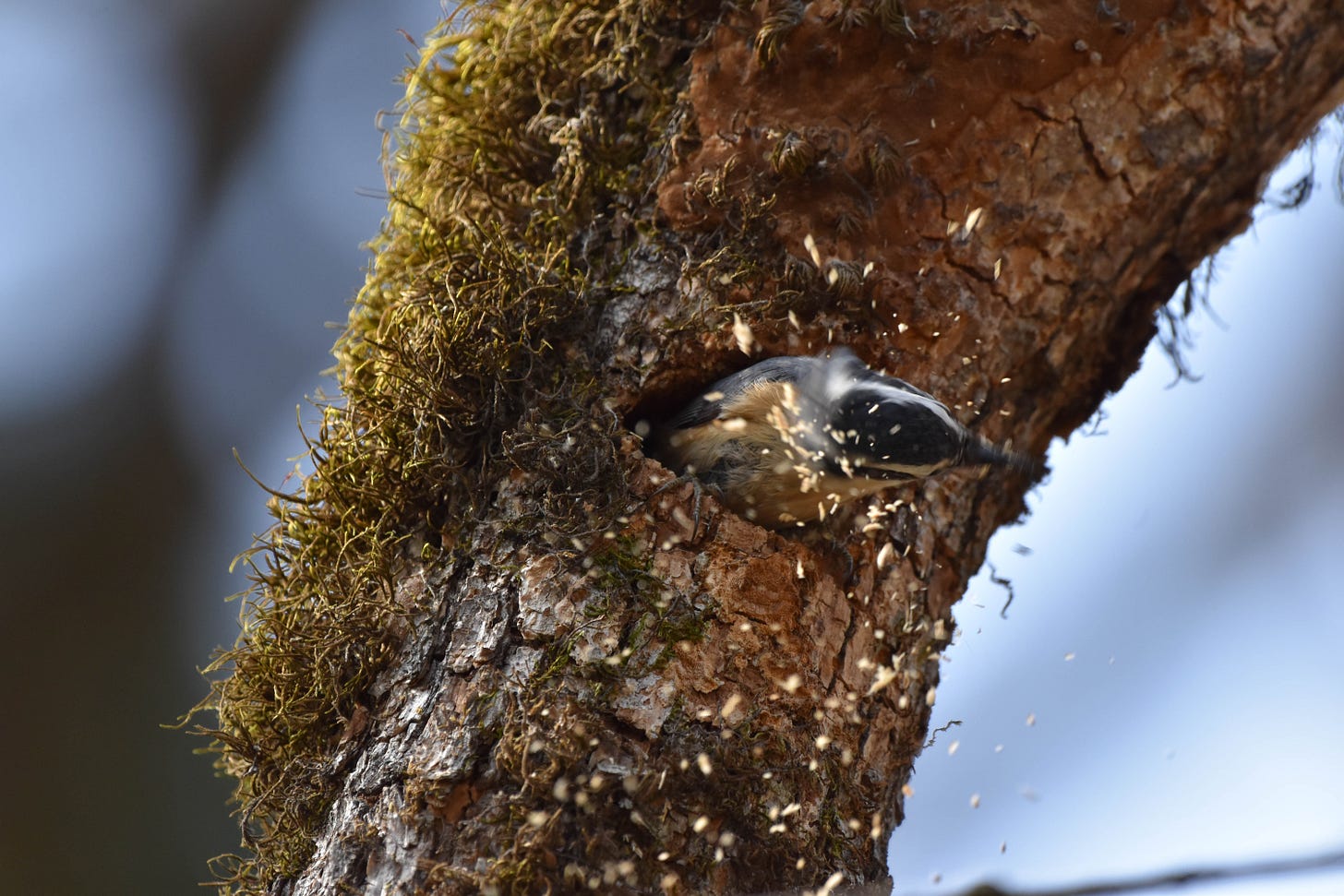
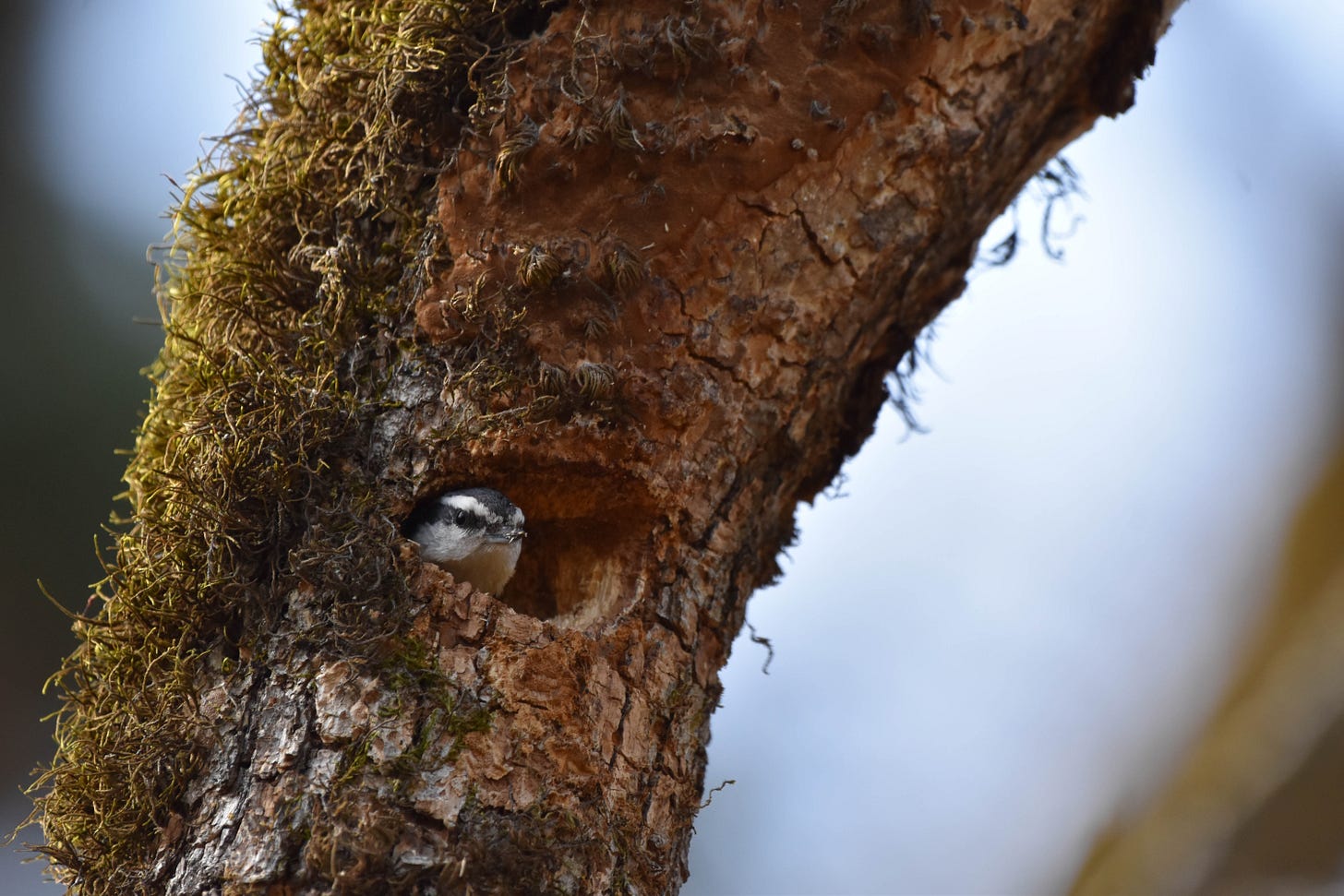
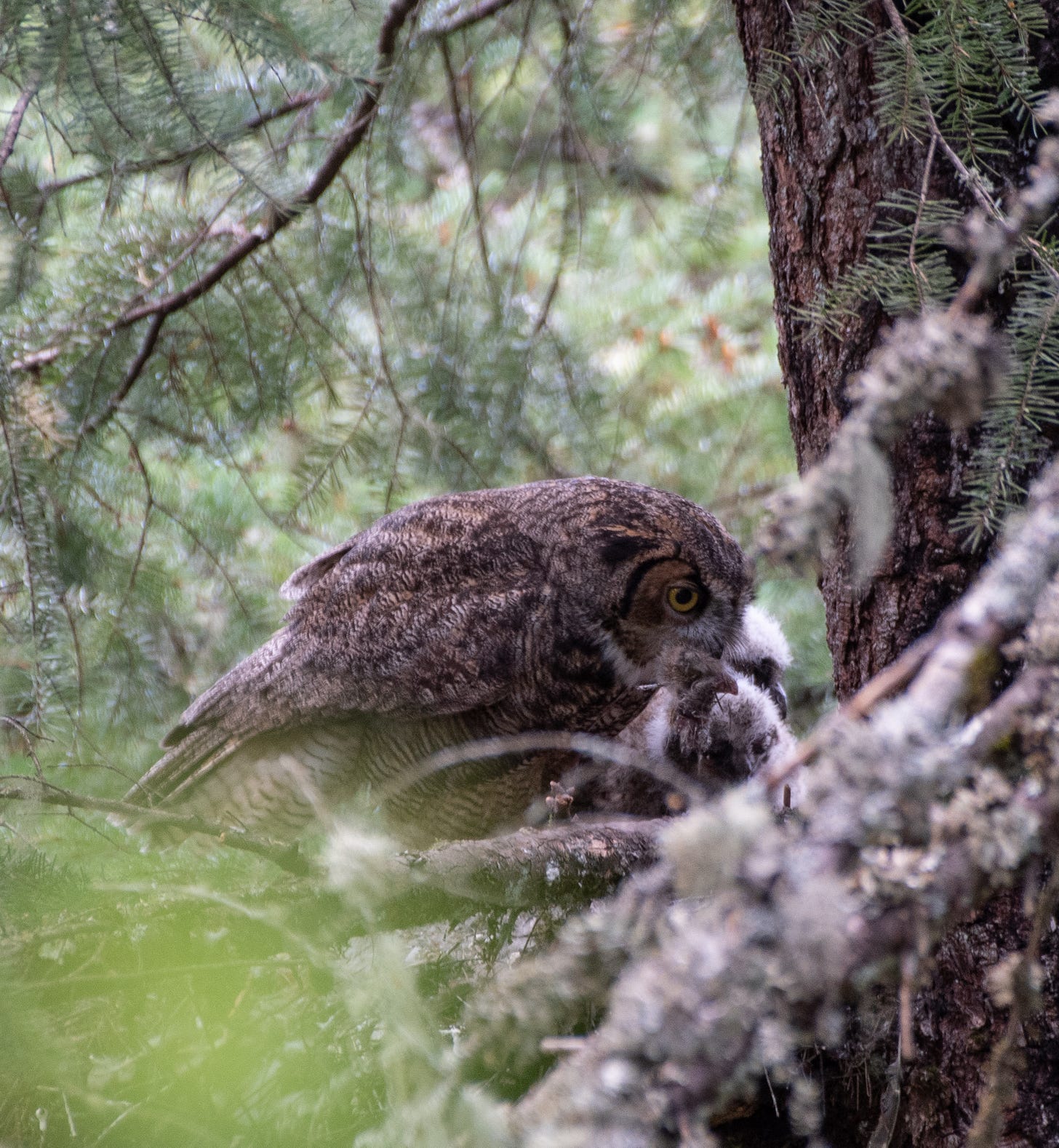
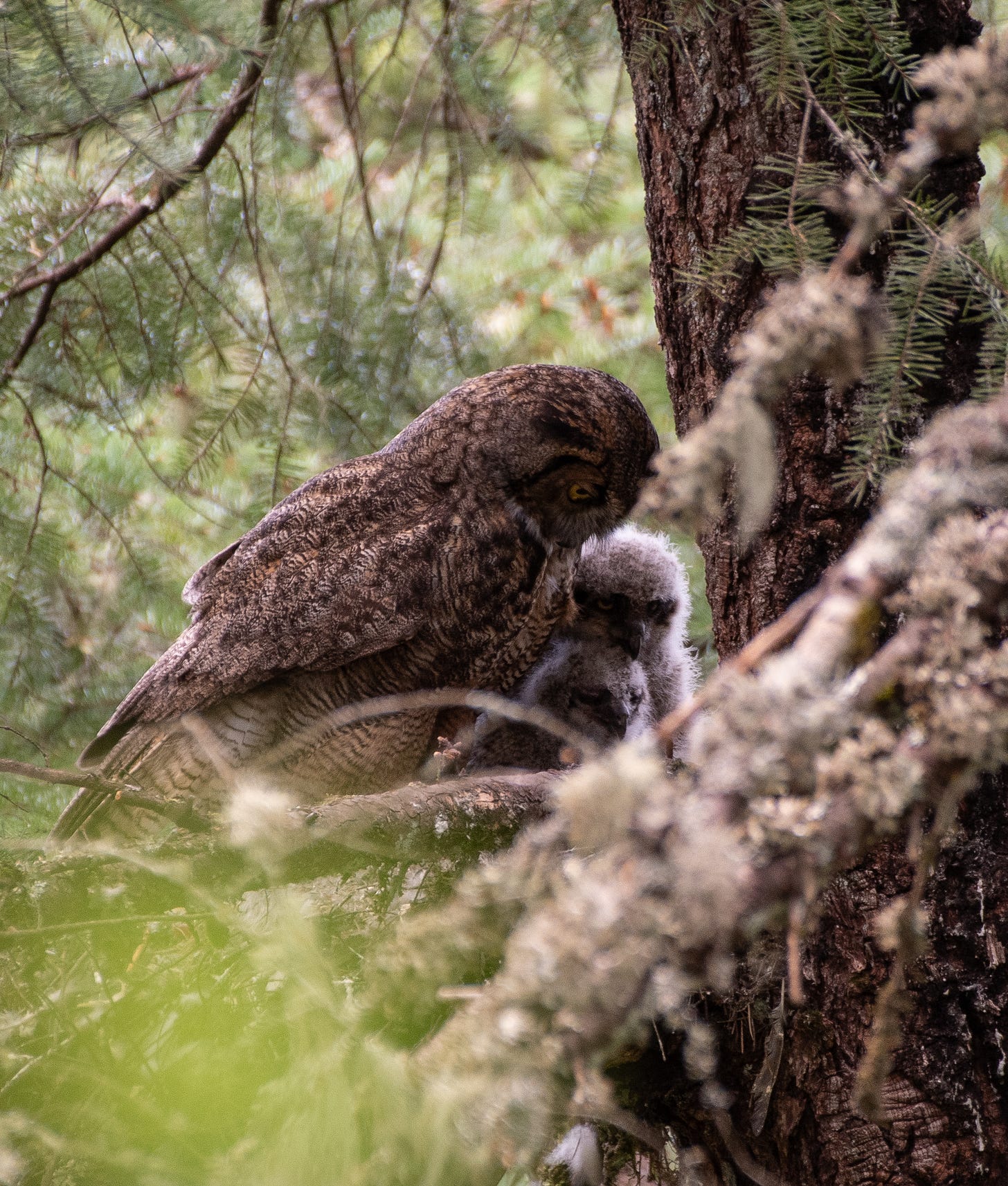
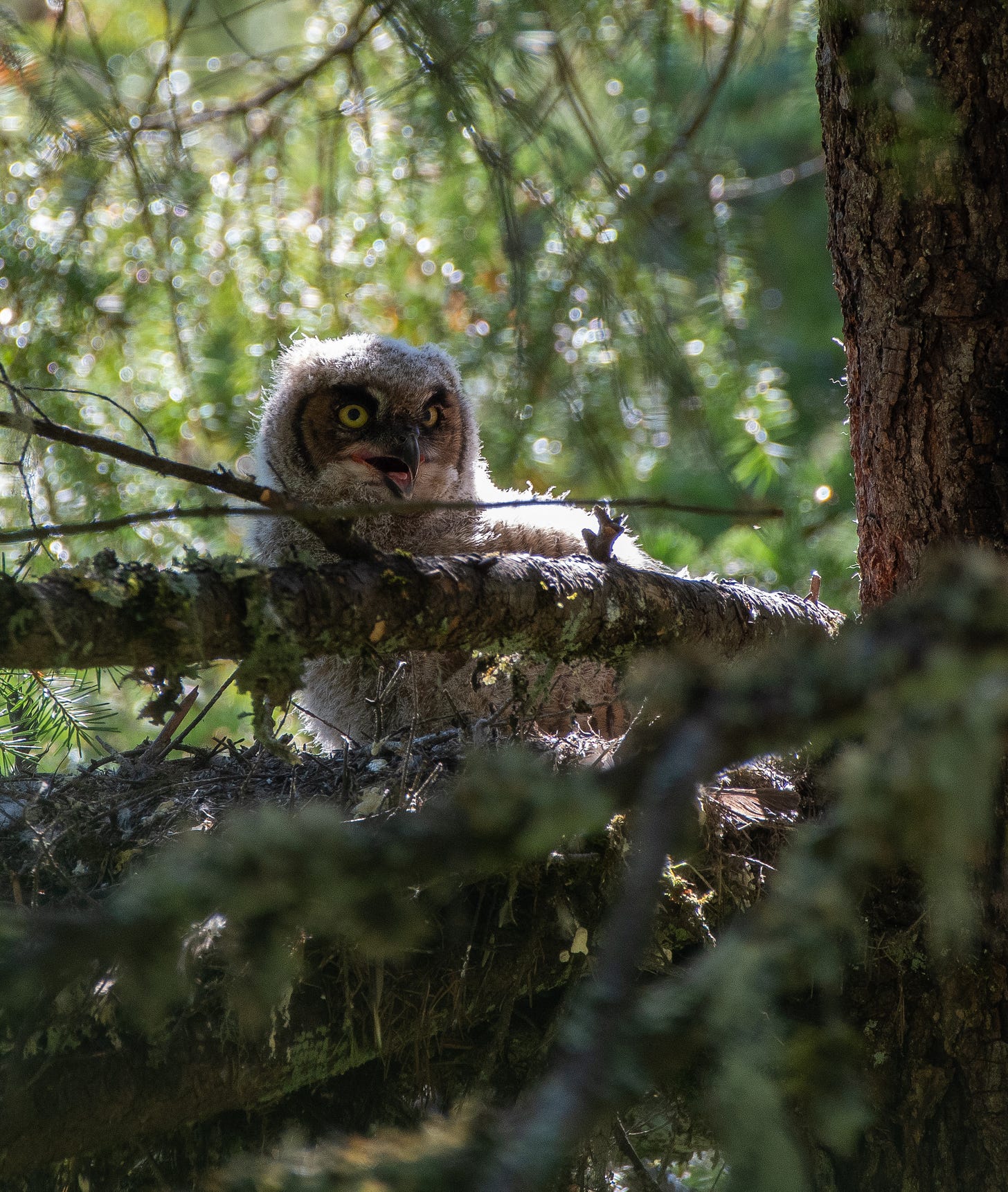
Amazing pics; I love the stories about how you found these various nests and the goings-on therein.
Also, I do feel sad for those little chicklets…